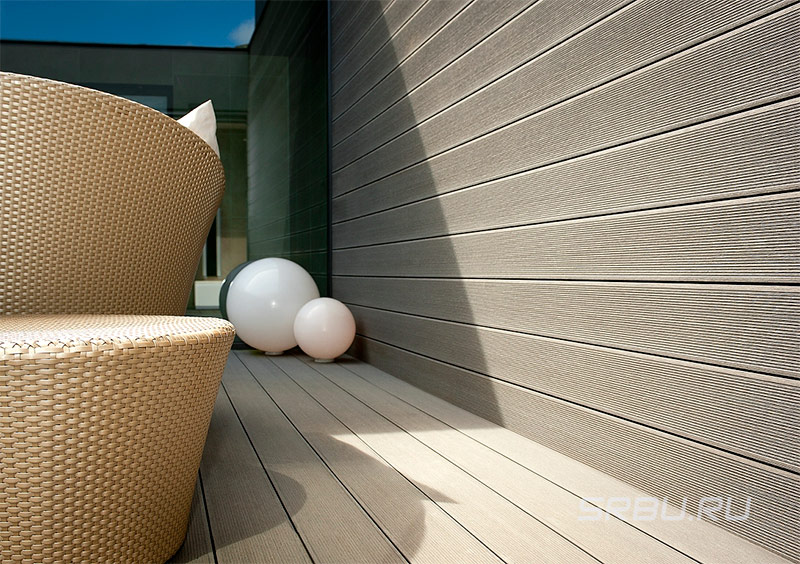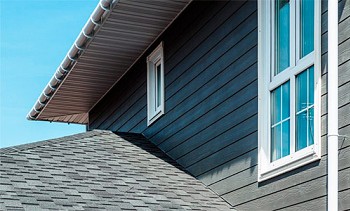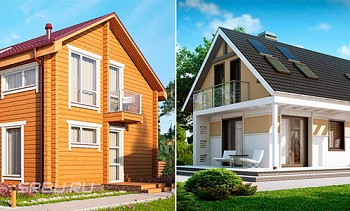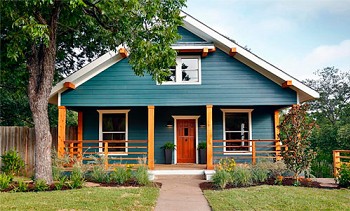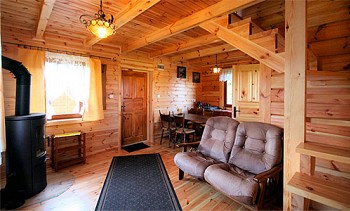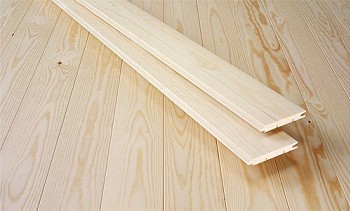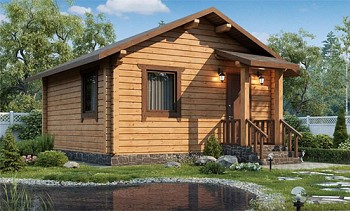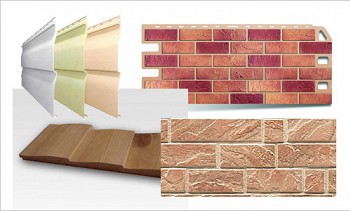How to choose a terrace board, varieties and application of the material
The modern market offers many varieties of decking (decking), each of which is characterized by its advantages and disadvantages. From this article you will learn how to choose a terrace board, what are the pros and cons of different types of boards, as well as the scope of application of a terrace coating.
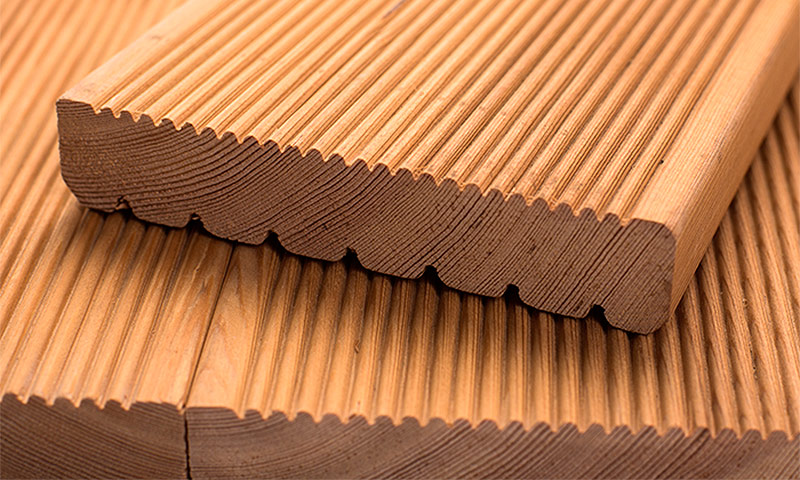
Content:
Types of terrace boards and their characteristics
According to the type of manufacturing material, a terrace board (decking) is divided into two main types:
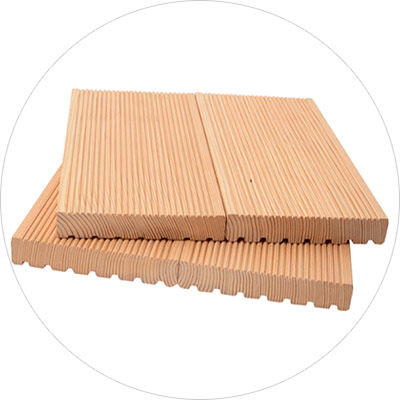
Terrace board made of natural wood.
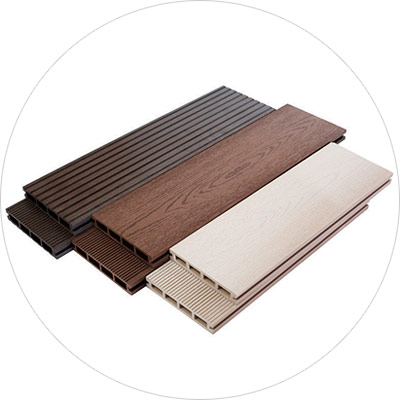
Terrasany board from KDP.
Natural wood decking
In the classic form, the terrace board is made of natural wood without any special processing. As a rule, this is a calibrated planed material having a groove and a comb (not always) for joining. As a raw material for the manufacture of terrace planks of this type, a wide variety of wood species is used - from inexpensive ones, such as pine and larch, to exotic hard ones - beech, garapa, wenge, zerbano and so on.
1. Terrace board made of exotic wood.
For the manufacture of terrace planks of this type, extremely expensive and beautiful wood is used. These include, for example, teak, Iroko, Kumaru, Merbau, Yara, Ipe, Garappa and others, growing, as a rule, only in bands with a tropical climate. The high price of a terrace board made of exotic woods is justified not only by its unique appearance, but also by many operational characteristics.
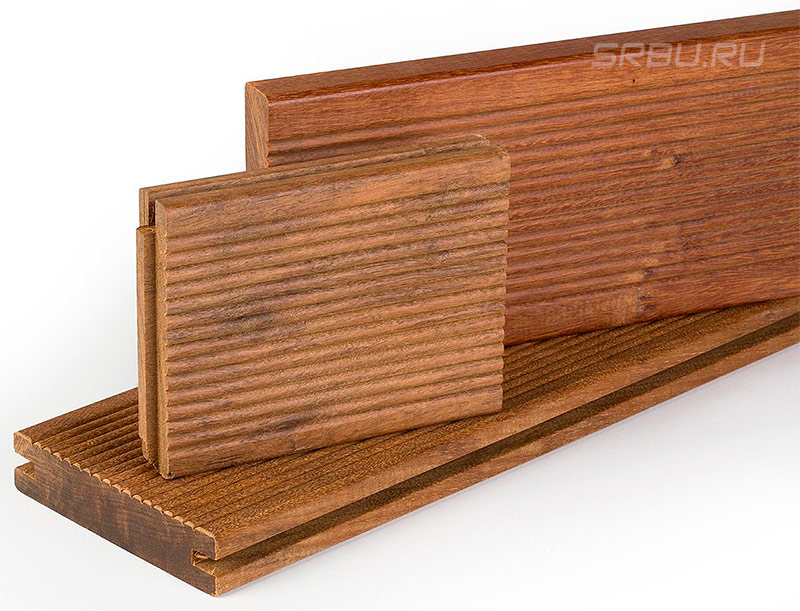

+ Advantages of exotic wood decking:
- chic appearance (noble shades, unique textures);
- high strength;
- increased resistance to mechanical stress;
- natural high hardness;
- viscosity;
- durability;
- nice smell;
- steady saturated color;
- ecological cleanliness.

- Disadvantages of decking from exotic woods:
- high price;
- flammability.
A significant minus for the material is only one - the price. The high cost of rare woods, delivery difficulties and other factors inflate the price tag for finished products so much that their use is limited to finishing elite class objects (cottages, representative residences, five-star hotels and restaurants with international awards).
2. Terrace board made of larch and pine.
The terrace board from larch and pine is in greatest demand in our country. Raw materials for these types of materials are growing literally within walking distance. That pine, that larch - not complex and not laborious to process. Both types of wood have a sufficient set of advantages. Naturally, there are also disadvantages, but they can be overcome with the help of protective impregnations and paint materials.
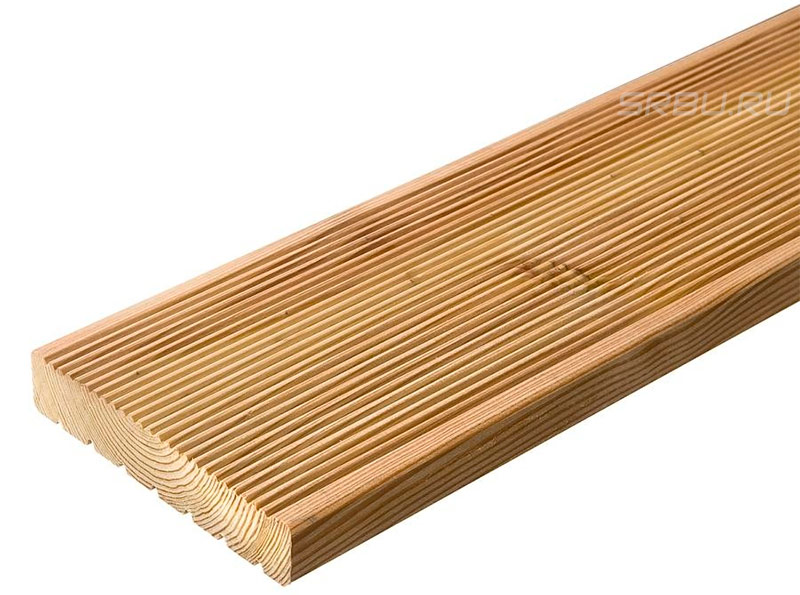

+ Advantages of terrace boards made of larch and pine:
- affordable price;
- a huge selection of varieties;
- simple installation;
- wide sector of application;
- Solid service life with proper installation and timely care.
- absolute environmental friendliness;
- natural structure and texture;
- good flexibility and elasticity;
- ease of installation.

- Cons of a terrace board from larch and pine:
- without additional protective measures, such a coating will last several years in the open air;
- without treatment with antiseptics, the board will quickly begin to rot and suffer from insects;
- without the use of protective equipment, the board loses its shape and appearance under the influence of ultraviolet radiation, moisture and temperature changes;
- natural wood needs periodic updating of protection against atmospheric influences (paints, varnishes, antiseptics);
- tendency to deform;
- the presence of natural defects in the form of knots, tar spots, splinter, blue and others.
Pine decking is worst affected by atmospheric conditions. Over time, it turns gray, and is also very exposed to mold. Larch terraced board is much more popular due to its positive characteristics. When wet, it becomes very dense and hard, and also does not significantly change its appearance.
Depending on the method of processing wood, there are the following varieties of terrace boards:
- terrace board from heat-treated wood;
- impregnated terrace board.
1. Decking from heat-treated wood.
As a raw material for a terrace board of this type, heat-treated wood is used. The heat treatment technology consists in the fact that slightly dried wood is loaded into special airtight chambers, where it is heated with hot steam, the temperature of which is 180-210 ° C. The choice of temperature regime strongly depends on the type of wood and on the qualities that are required to be obtained at the output. At high temperatures, absolutely all moisture and organic wood components that contribute to rotting are removed from the structure of the material.
The heat-treated board becomes more stable and keeps its size better. Depending on the technology used, wood can be given a characteristic color or leave its appearance unchanged.
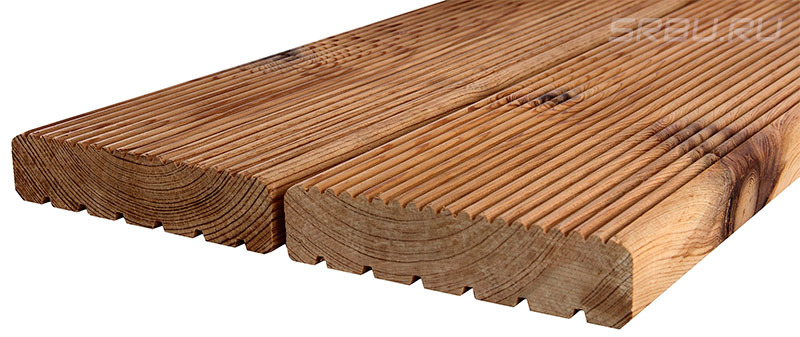

+ Advantages of a thermal wood deck board:
- unlimited service life (subject to proper installation);
- highest strength;
- low ability to absorb moisture;
- presentable and stable appearance;
- color uniformity of the entire array;
- geometry stability;
- lack of decay;
- absolute unattractiveness for wood-boring insects;
- not afraid of sudden changes in temperature and humidity;
- heat treatment allows elite finished products to be made from inexpensive wood.

- Disadvantages of a thermal wood deck board:
- relatively high price;
- installation process complicated due to hardness and brittleness;
- requires additional processing to protect against ultraviolet radiation.
Along with all the advantages, it should be noted that after heat treatment the terrace board remains an environmentally friendly material. In general, heat-treated terrace boards are quite common today, despite the frightening cost. The reason for this prevalence is a long service life in any, even the most severe operating conditions.
2. Impregnated decking.
Along with a heat-treated terrace board, impregnated wood is also distinguished by high operational characteristics. The key advantage of the material is deep protection from external influences - pests, moisture, microorganisms, ultraviolet radiation.
The technology of impregnation of lumber consists in their impregnation with special protective compounds under high pressure. Processing is carried out in a production environment using sealed autoclaves. First, the board is loaded into the chamber, from which all air is pumped out using a powerful pump, that is, a vacuum is created inside. Due to this, excess moisture is removed from the pores of the wood, contributing to the rapid decay of the material.
At the second stage, on the contrary, high pressure is created in the autoclave with the board, and in parallel, liquid protective compositions for impregnation are supplied inside. Under these conditions, the protective composition penetrates deep into the structure of the wood, which cannot be achieved in any way with traditional surface application with a brush or spray.
The last stage of impregnation is the pressure relief in the chamber with the impregnated board again to the state of vacuum. As a result of this operation, excess impregnation mixture is removed from the surface and upper layers of the material.The output is a deeply soaked board with enhanced performance properties.
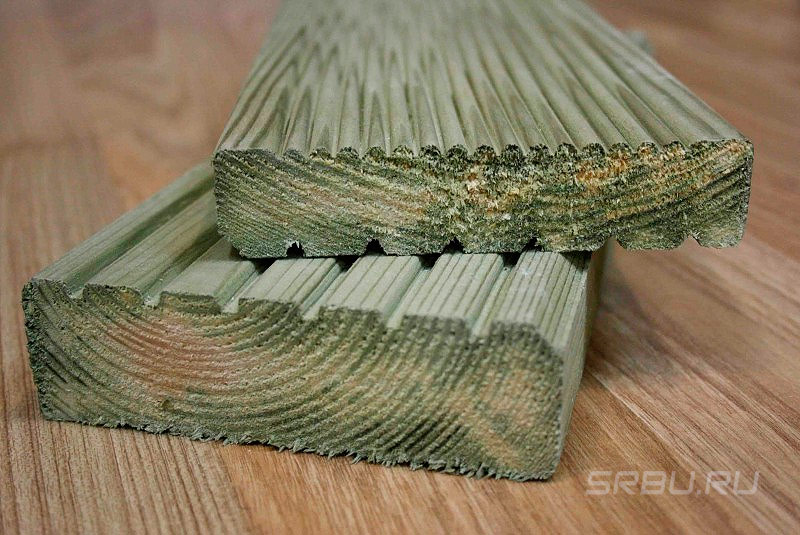

+ Advantages of the impregnated terrace board:
- improved protection against external influences;
- reduced ability to absorb moisture;
- unattractive for wood-boring insects;
- unfavorable environment for the reproduction and development of microorganisms;
- increased strength;
- durability;
- the ability to repeatedly update the terrace board by scraping;
- ease of installation and handling.

- Disadvantages of the impregnated terrace board:
- higher cost per m2 in comparison with a classical terrace board from an unprocessed tree;
- some board impregnation compounds may contain toxic substances, which limits the range of application of the material;
- for the above reason, some positions of the terrace planks can only be operated at open facilities;
- after impregnation, an insufficiently dried board may take the form of a “boat” due to oversaturation with impregnating agents (the larger the width of the board, the worse it behaves in this regard).
The widespread use of impregnated terrace boards has not yet been observed, however, this material has all the makings to take a leading position in the market. Impregnation with protective compounds under pressure allows us to make finished products very durable and resistant to harmful effects from common wood species.
In general, when compared with more expensive materials and wood processing technologies, the impregnated terrace board is far from the most expensive, and therefore quickly gaining popularity. In addition, it quickly pays off due to stability and resistance to atmospheric influences, insects and microorganisms.
WPC decking
This type of terrace board is more relevant to non-natural materials, although its composition also includes wood. What is this type of terrace board made of? WPC is a wood-polymer composite. The raw material composition includes ground wood flour, a certain polymer, as well as modifiers and dyes.
In the role of polymers for the preparation of raw materials, polyethylene, polyvinyl chloride or polypropylene are used. Modifiers are needed so that the material does not have pores, and also gains the necessary strength. The color of the pigment dye can be absolutely any, which allows you to choose a terrace board for different design ideas. As a rule, a WPC deck board is hollow inside, since the material's safety margin and the presence of stiffeners allow not to make it monolithic without loss of operational properties.
In the manufacture of WPC boards, dry wood flour is mixed with other components. Next, from the obtained raw materials, under pressure, form a board of the desired width and cut to the required length.
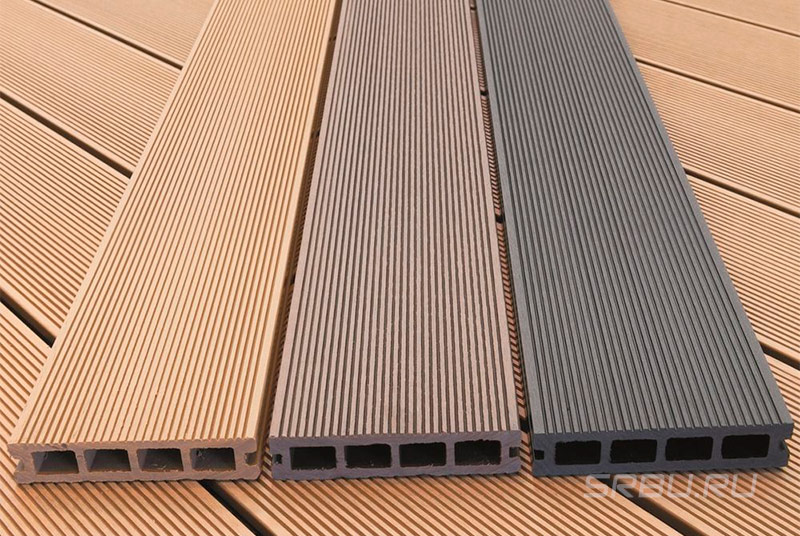

+ Advantages of WPC decking:
- absolute hydrophobicity;
- unattractive to insects;
- is not a breeding ground for microorganisms;
- does not support combustion;
- does not crack;
- not afraid of ultraviolet and temperature changes;
- long service life, up to 50 years;
- a huge selection of colors, textures and shades for every taste.

- Disadvantages of WPC decking:
- high price;
- the presence of a characteristic odor;
- in appearance it often resembles artificial plastic panels;
- the tendency to slightly change geometry in direct sunlight.
WPC decking, despite certain disadvantages in its arsenal, quickly gained popularity due to its durability and other important advantages.
How to choose a terrace board
When choosing a terrace board, it is important to focus on several criteria at once, which affect the operational properties of the finishing material. This is far from being only a price, but also a manufacturer, and raw materials, and manufacturing technology, and appearance, and others. Consider the most important points on the example of choosing a terrace board from solid wood and from a wood-polymer composite.
Based on the above types, we can draw conclusions about which terrace board to choose for various purposes:
Terrace board made of exotic wood.
An option for designing elite objects, as well as cases where the appearance, originality and quality are above the price tag.

Terrace board made of pine.
It is suitable for cases when the budget is limited, and excessive requirements are not imposed on quality and durability.

Larch decking.
The classic version, inexpensive and practical, but requiring regular updating of the protective layer, can be used in fairly damp places.

WPC decking.
Long-lasting, hydrophobic, non-combustible, unattractive to insects, but, nevertheless, an artificial composite material, suitable for widespread use and does not require regular maintenance.

The properties of a wood decking board depend on the particular wood species and the higher the performance of the wood, the higher the cost of the board. If longevity is a priority, then the best option would be a WPC deck board. It can last up to 50 years, while not requiring careful care. It is also important that the terrace board from KDP does not support combustion.
Choose a terrace board from solid wood
Next, consider what points you need to pay attention to when choosing a board from solid wood.
Wood species. The harder and denser the wood species is, the more durable the terrace board will be. The density of wood directly affects the ability to absorb moisture. The denser the wood, the less absorbent. Exotic wood species have the highest density, but the cost of such a coating is quite high. It has an interesting texture and color. If you are not limited in means, then it is worth considering a terrace board from exotic breeds of a tree.
Pine decking without special treatment with protective compounds quickly collapses under the influence of atmospheric phenomena. Rapid color loss occurs (it becomes gray), and mold damage is also observed.
In order to extend the term of use of such a coating, the pine terraced board is subjected to impregnation or heat treatment. Despite protecting wood, pine requires more care. Buying cheaper material, in the future, it will require additional material costs.
Larch decking is very popular. It is devoid of certain disadvantages inherent in pine wood. When wet, it becomes hard, and during operation does not change much color. When choosing a terrace board from larch, it must be taken into account that the material should be chamber-dried with a moisture content of 11 - 12%. It is best to give preference to Siberian larch. As for the sizes, the optimal thickness of the board is from 27 to 35 mm, width from 90 to 142 mm.
Terraced solid wood is divided into several varieties:
- Extra;
- Prima;
- A;
- IN;
- Sun;
- FROM.
Each grade has its own tolerances for the number of knots and surface quality. Material of any grade should not have drop knots. In addition, on the lateral edges of the board, knots should not be in any form. It is not recommended to buy material with cracks, since after winter they become even larger, which leads to faster destruction of the coating.
Profile. The profile of a terrace board made of wood can be made with or without a side. A profile with a side forms a coating where individual boards stand out very well.


Price. A quality terrace board should not have a low price. In this case, the cost justifies the quality.
The correctness of the geometry. When buying, look at the surface of the material. The board must have the correct geometric shape. The presence of wavy lines and recesses at the edges or front surface is not permissible.
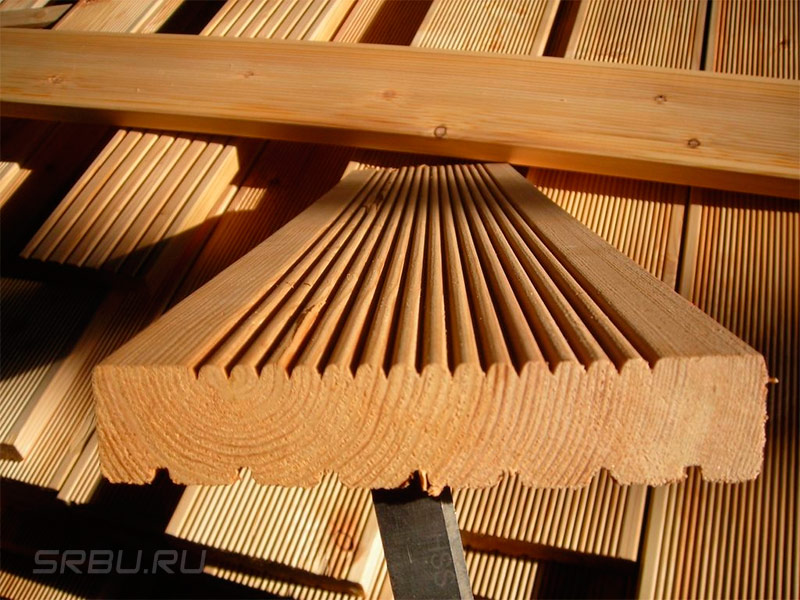
Board color. The larch and pine plank is light and, if necessary, can be toned to any shade. But if you choose a board made of dark wood, then you will not be able to change the color.The color of the board should be in harmony with the facade of the house and fit into the landscape design.
Choose a terrace board from WPC
Next, we consider the important parameters that must be considered when choosing a terrace board from a wood-polymer composite.
The ratio of components in the composition. WPC decking consists of wood flour and polymers. Depending on the percentage of wood and polymers in the composition of the board, its operational characteristics and appearance change.
- The ratio of wood / polymers is 50/50. This is the most optimal ratio for a WPC board, as wood aesthetics and polymer functionality are preserved.
- The ratio of wood / polymers is 70/30. Since wood prevails in the composition of such a board, the performance of the material is deteriorating. Such a board is prone to swelling due to moisture and is generally more fragile.
- The ratio of wood / polymers is 40/60. With this ratio, the aesthetic appeal of wood disappears, the board becomes like ordinary plastic.
Type of polymer used. Various polymers can be used as part of a WPC board, which affect the practicality and durability of the coating. Such polymers can be: polyvinyl chloride, polyethylene or polypropylene.
- When using polyvinyl chloride (PVC), the board is particularly durable, stable, non-slip and has a higher price.
- When using propylene, the board is of average quality, it does not slip and is quite durable.
- When using polyethylene, the board is more susceptible to abrasion and supports combustion.
In addition, the polymer may be primary or secondary processing. The best option is when primary processing PVC is used to produce the board.
Board cut. Carefully consider the cut of the board from the end. On the cut should not be present multi-colored blotches and large voids. This may indicate a violation of technology or the use of low-quality components in production.
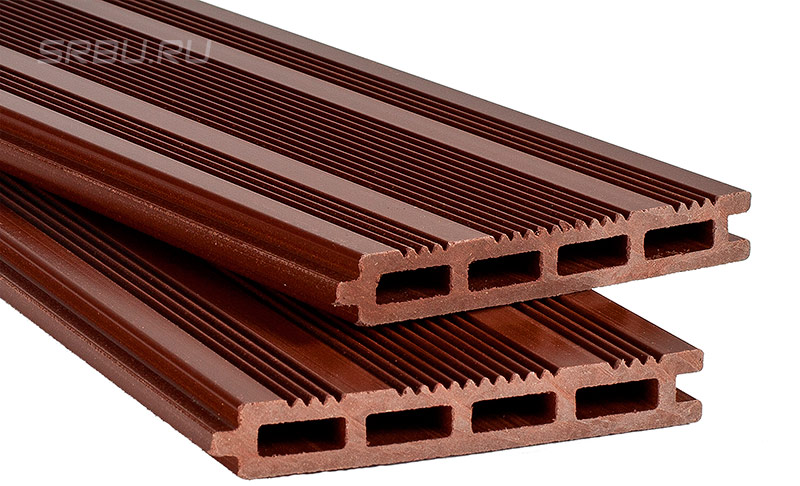
Board surface. Carefully inspect the surface of the boards. If they have swellings, irregularities of a wavy appearance, then it is better to refuse to buy such material.
Type of surface. It is best to give preference to a board with an antislip surface. The front surface of such a board has shallow grooves, which makes it non-slippery even when wet.
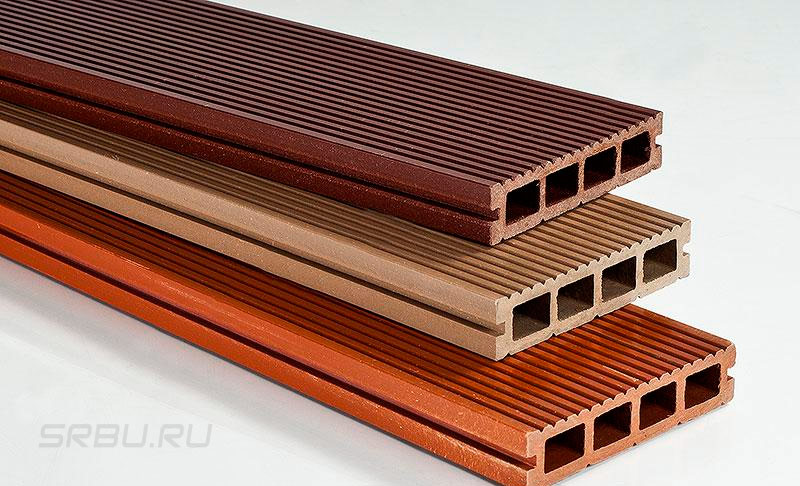
Color. Due to the possibility of adding dyes in the manufacture of boards from WPC, there is a wide variety of colors of terrace boards made from this material. The color is selected depending on the color of the facade of the house or the general concept of landscape design.
Some colors of WPC decking
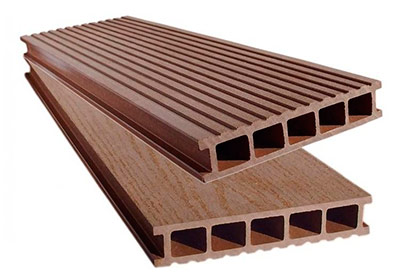
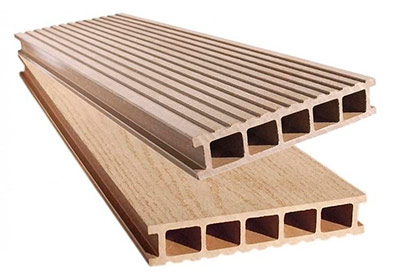
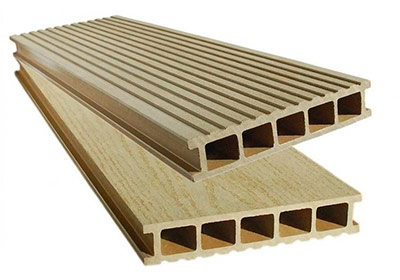
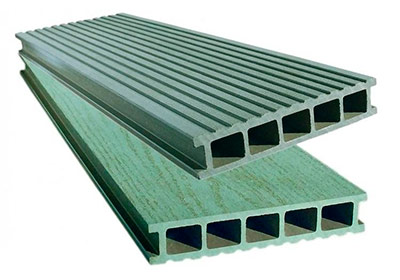
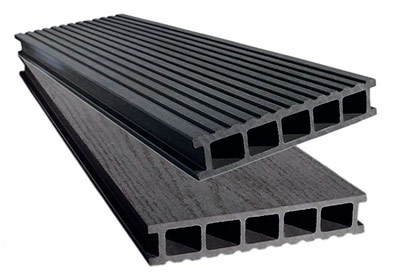
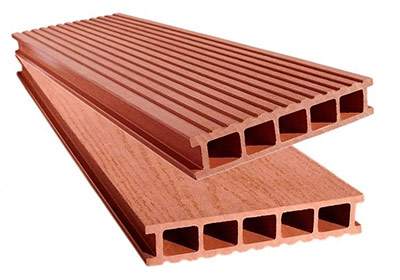
The use of terrace boards
Next, consider where the terrace board is used. Terrace board is quite versatile material. Due to its properties, in addition to arranging flooring on terraces, this material is suitable for finishing many other objects. In some sources you can find information that the terrace board is used even for the construction of fences.
Main scopes:
1. Paving terraces, patios and garden seating areas.
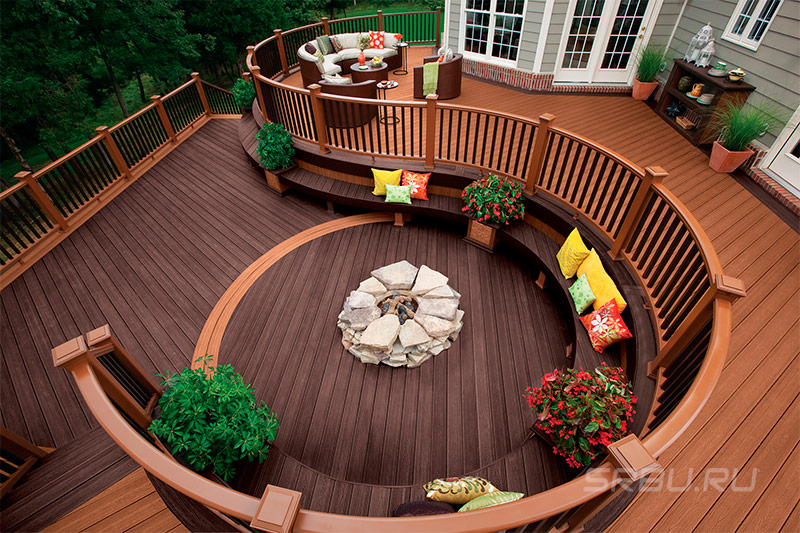
2. Flooring on balconies, loggias and verandas.
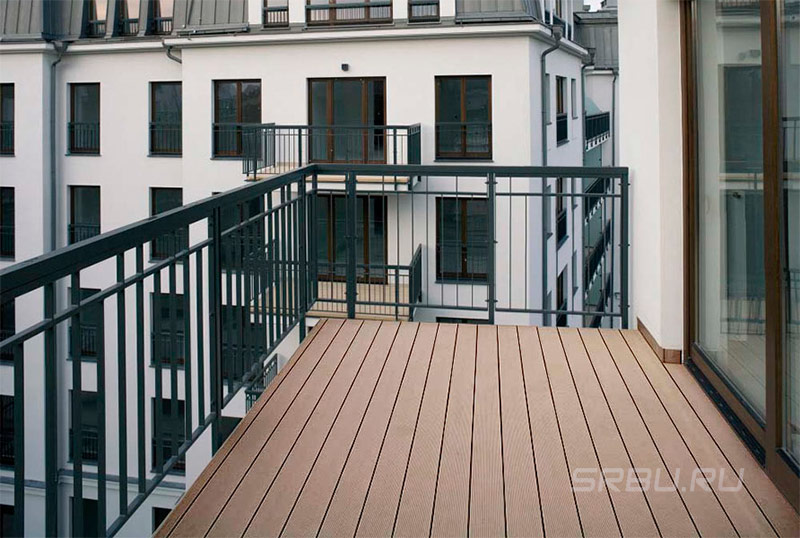
3. Arrangement of sites around outdoor pools.
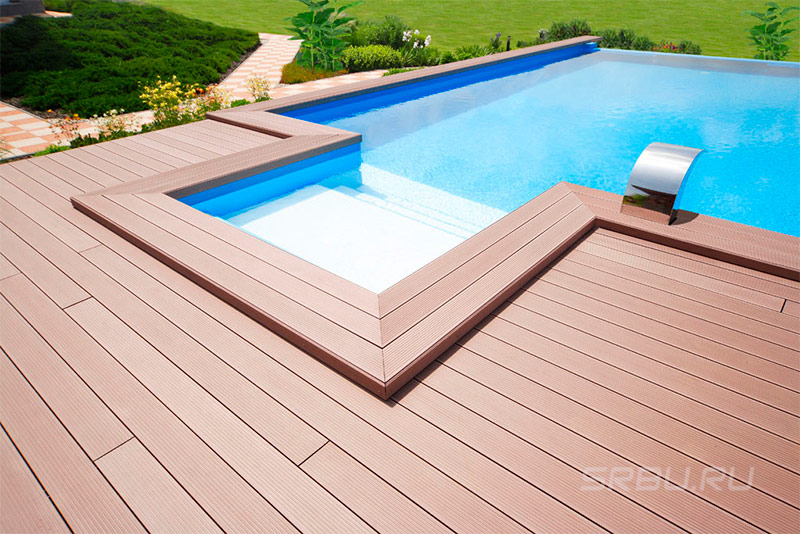
4. Flooring of paths in the yard and in the garden.
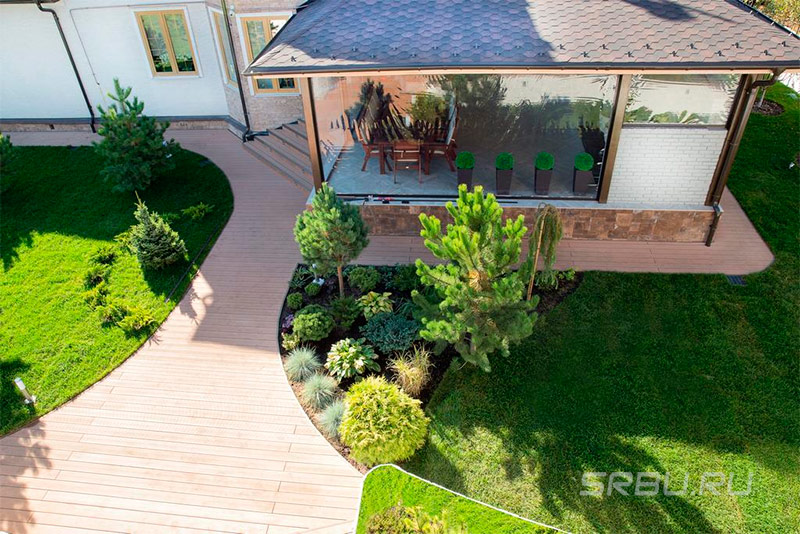
5. Decorating the steps in the garden.
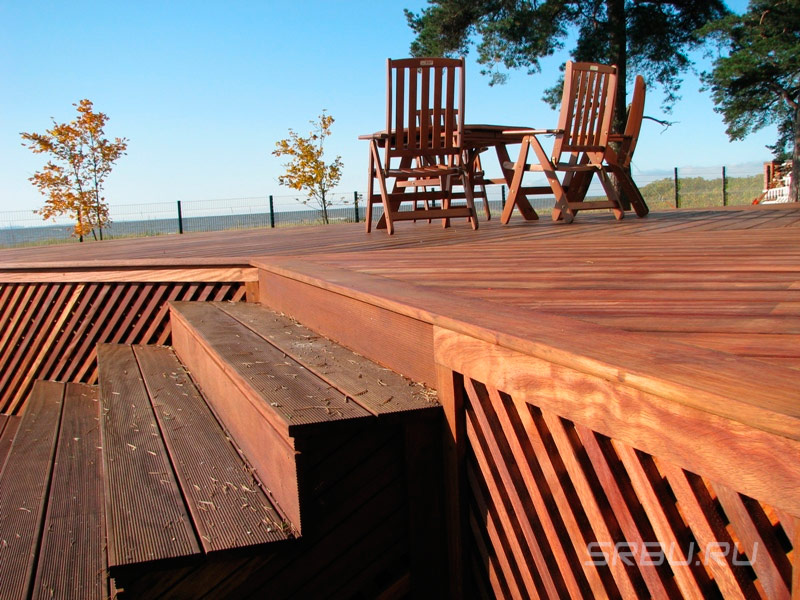
6. Arrangement of moorings and piers.
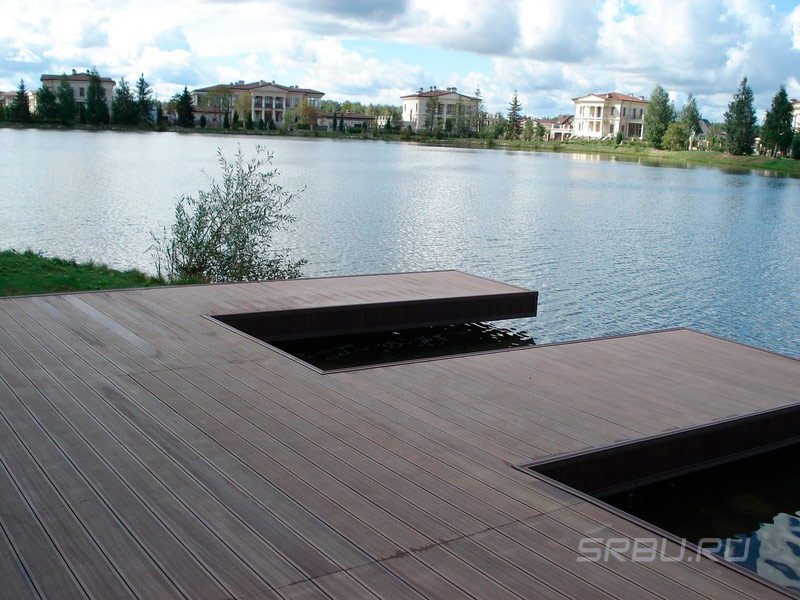
7. Paving of playgrounds.
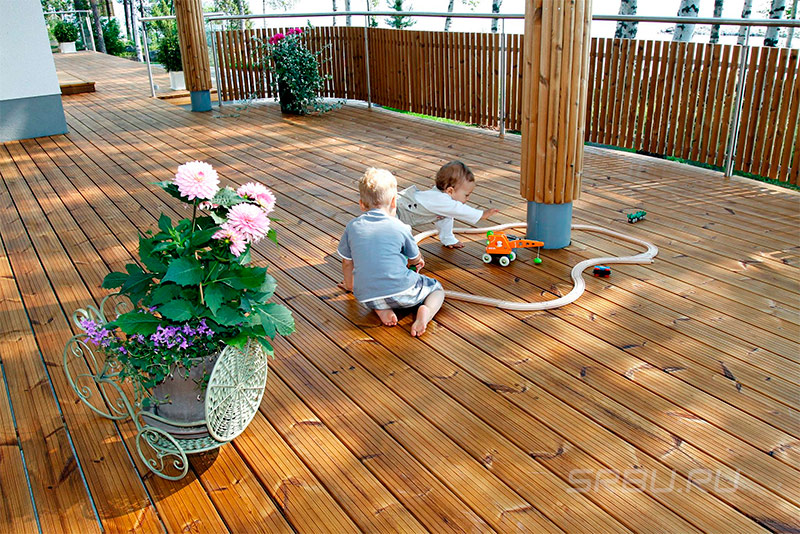
8. Creation of unusual architectural compositions in landscape design.
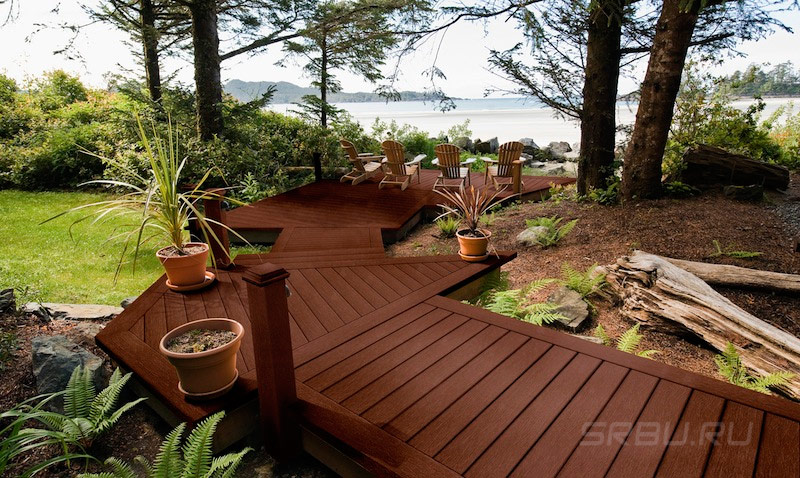
9. Finishing the facades of buildings.
